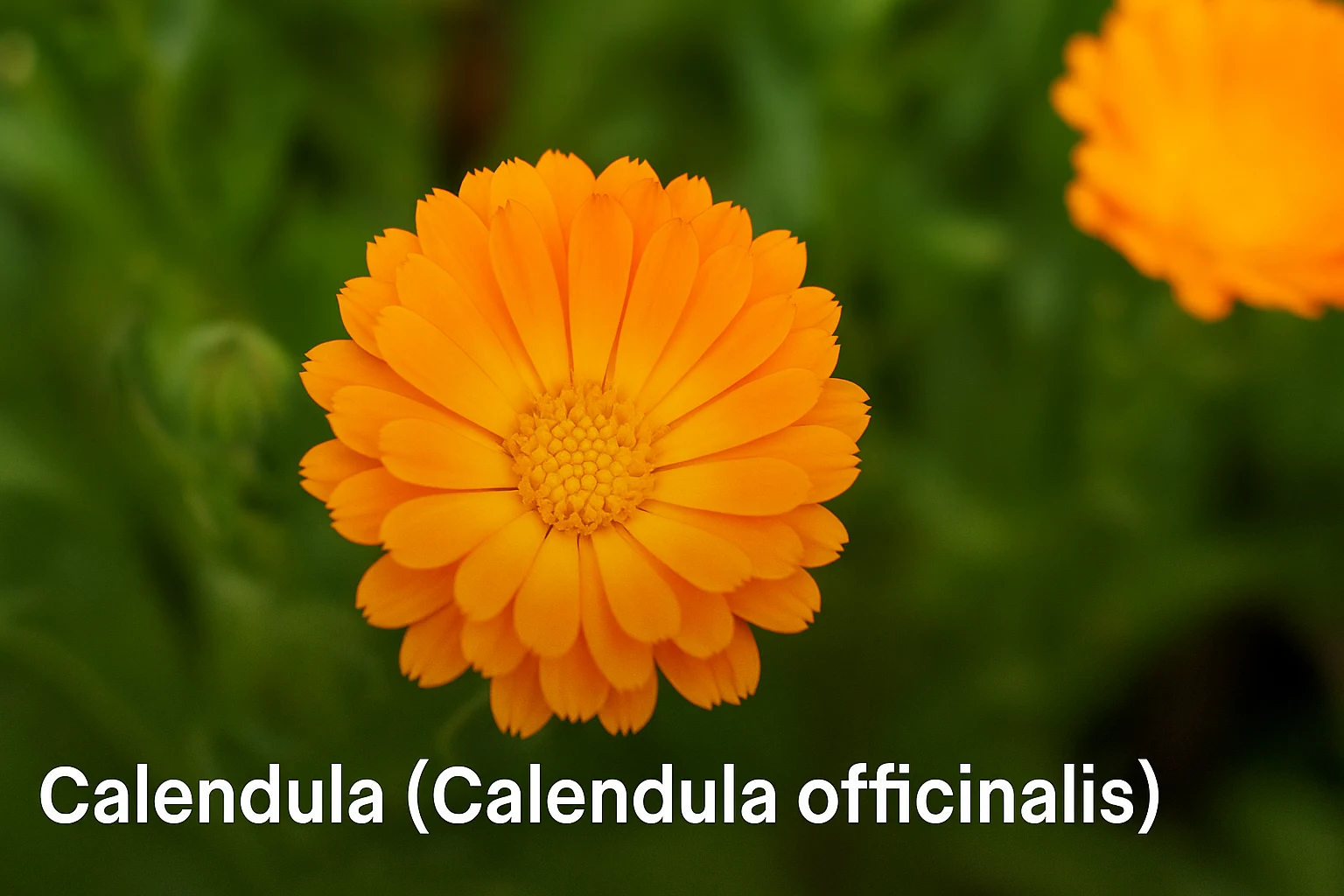.webp)
Winter in India doesn’t have to mean bare balconies and dull terraces. While temperatures dip, many flowering plants burst into life, painting our gardens with vibrant colours and sweet fragrances.
As an urban gardener, you can create a winter paradise without spending all your weekends on plant care.
Below are five hardy winter flowers that thrive in Indian conditions, even for beginners.
They’re backed by expert insights and packed with practical tips to make your 2025 gardening journey joyful and stress‑free.
Why Choose Easy‑Care Winter Flowers?

Short days and cool temperatures can make gardening challenging, but the right plant choices help you enjoy blooms with minimal fuss. Easy‑care winter flowers:
- Handle cooler temperatures and don’t demand constant attention.
- Add colour and fragrance to balconies, patios and terraces.
- Provide nectar for bees and butterflies when other flowers are scarce.
- Are perfect for time‑pressed urban gardeners who want results without fuss.
Let’s dive into the top five plants that check all these boxes.
1. Sweet Alyssum (Lobularia maritima)

Why It’s Perfect for Indian Winters
The North Carolina State University Extension describes sweet alyssum as “a popular, easy to grow, flowering annual… typically used as an edging plant”.
It produces fragrant mounds of tiny white or pastel blooms from early winter to spring and thrives in full sun to partial shade
Care Tips
- Light: Full sun to partial shade. Too much shade can reduce flowering.
- Soil: Well‑drained soil; tolerates drought and dry conditions
- Water: Water when the top inch of soil is dry; avoid over‑watering.
- Maintenance: Trim back when blooms decline to encourage new growth. Leave plants in place over winter and remove them in early spring to allow self‑sown seedlings to sprout
Bonus Insight
For more detailed cultivation information, check the NC State Extension Gardener Plant Toolbox
Shop Alyssum
Plant a border of honey‑scented flowers by ordering Sweet Alyssum Flower Seeds. For variety, try the Flower Seed Combo – Pansy, Calendula, Dianthus & Sweet Alyssum.
2. Snapdragon (Antirrhinum majus)

Why It’s Perfect for Indian Winters
Snapdragons lend vertical interest with spires of colourful “dragon‑mouth” blooms.
The Times of India highlights that snapdragons grow tall rather than droop and come in vivid shades of orange, yellow, red and more.
They bloom abundantly during the cool season and look stunning in mixed containers.
Care Tips
- Light: Full sun (at least 4–6 hours). Partial shade is acceptable in very warm climates.
- Water: Keep soil evenly moist but not soggy. The Old Farmer’s Almanac notes that you should check moisture an inch below the surface and water if dry.
- Soil: Loose, well‑draining soil rich in organic matter.
- Maintenance: Mulch around plants to conserve moisture and cool roots. Pinch young plants at 4–6 inches to encourage bushier growt.
Bonus Insight
For extended blooms, deadhead spent flowers regularly and support taller varieties with stakes during windy spells.
Shop Snapdragons
Bring fairy‑tale blooms to your balcony with Snapdragon Flower Seeds or mix them with other winter favourites in a Snapdragon, Marigold, Portulaca & Petunia Combo.
3. Aster (Aster species)

Why It’s Perfect for Indian Winters
Asters bring star‑shaped daisies in shades of purple, pink and white. According to the North Carolina Extension Gardener Plant Toolbox, asters are easy to grow and require very little maintenance.
They typically bloom in late summer and autumn, but in many Indian climates they continue flowering well into winter, providing a welcome colour splash when other plants fade.
Care Tips
- Light: Full sun to partial shade. Ensure at least 4 hours of direct light for good blooming.
- Soil: Moist, well‑drained soil. Add compost to improve fertility.
- Water: Moderate; allow the top layer to dry slightly between waterings.
- Maintenance: Divide clumps every 2–3 years to prevent overcrowding. Watch for pests such as lace bugs and aphids.
Shop Asters Seeds Online
Enjoy a meadow‑style display by sowing Aster Mix Flower Seeds. For variety, explore the Aster, Dahlia & Chrysanthemum Bundle.
4. Calendula (Calendula officinalis)

Why It’s Perfect for Indian Winters
Calendula, also called pot marigold, produces bright orange or yellow daisies and is known for medicinal uses.
The University of Wisconsin Horticulture notes that Calendula is an annual or short‑lived perennial and has been cultivated for centuries; its daisy‑like flowers bloom almost continuously until the first heavy frost.
Care Tips
- Light: Full sun for best flowering. In very hot regions, provide afternoon shade.
- Soil: Any well‑drained soil; calendula is tolerant of poorer soils.
- Water: Moderate; avoid waterlogging. Calendula performs best when moderately watered.
- Maintenance: Sow seeds ¼–½ inch deep just before the last frost. Deadhead regularly to encourage continuous blooms. The plant may self‑sow if spent flowers are left on.
Shop Calendula
Light up your winter garden with Calendula Flower Seeds or select the Pansy, Calendula, Red Poppy & Cornflower Bundle for a colourful mix.
5. Pansy (Viola × wittrockiana)

Why It’s Perfect for Indian Winters
Pansies are beloved for their heart‑shaped petals and cute “faces.” They come in many colours and thrive in cool weather.
The Times of India notes that pansies bloom well in winter and have subtle fragrance. They’re great for borders, containers and window boxes.
Care Tips
- Light: Full sun to partial shade. In warmer Indian climates, partial shade prolongs blooming.
- Soil: Rich, well‑draining soil amended with compost.
- Water: Keep soil moist but not waterlogged. Gardening experts advise watering when the top inch of soil is dry and mulching to conserve moisture.
- Maintenance: Fertilize every two weeks with a balanced, phosphorus‑rich fertilizer. Pinch off spent flowers to encourage new blooms. Provide a light protective covering during sudden cold snaps
Shop Pansies
Grow cheerful pansies in pots or borders with Pansy, Calendula & Red Poppy Seed Bundle or choose individual colours from Urban Plant’s extensive Winter Seeds Collection.
5 Plants for Indian Winters (Easy Care) [Table/List Format]
| Plant Name | Sunlight | Watering | Maintenance | Buy Link |
|---|---|---|---|---|
| Sweet Alyssum | Full to partial sun | Keep soil moist | Very low | Buy Now |
| Snapdragon | Full sun | Water regularly | Low | Buy Now |
| Aster | Full sun | Moderate | Medium | Buy Now |
| Calendula | Full sun | Water moderately | Very low | Buy Now |
| Pansy | Partial to full sun | Keep soil moist | Low | Buy Now |
Quick Winter Gardening Tips for Indian Cities

- Sow at the right time: In North Indian cities like Lucknow and Delhi, sow seeds in late September to early October. In milder climates (Mumbai, Bengaluru), sow from October to December.
- Prepare pots: Use containers with drainage holes and add coco peat or vermicompost for moisture retention. Urban Plant’s Self‑Watering Pots keep watering simple.
- Feed moderately: Avoid over‑fertilizing; too much nitrogen encourages leaves rather than flowers. Choose balanced organic fertilizers like Urban Plant’s Rose Grow Fertiliser.
- Sun & shelter: Place pots in locations that receive at least 4–5 hours of gentle winter sun. Move them to a sheltered spot during extreme cold or frost.
Read Also
15 Most Common Indoor Plant Diseases And How to Care Them
Stop Overwatering! These 7 Plants Love Self-Watering Pots And Never Complain
DIY Hacks: Create Your First Stunning Terrace Garden Under ₹5000
FAQs (Featured Snippet Targets)
Which plants grow best in Indian winters?
Top winter plants in India include Sweet Alyssum, Snapdragon, Aster, Calendula, and Pansy. These flowers bloom well in low temperatures and need minimal care.
What is the easiest winter flower to grow in India?
Calendula is one of the easiest and most reliable winter flowers in India. It grows fast, resists frost, and blooms brightly with basic care.
Can I grow winter flowering plants on a balcony?
Yes! Pansy, Alyssum, and Snapdragon are ideal for balcony gardens. They need 4–6 hours of sun and grow well in pots with good drainage.
When should I sow winter flowering seeds in India?
Start sowing winter seeds between September and November. This allows your plants to bloom fully during December to February.
Do flowering plants survive Indian winters without sunlight?
Most winter flowers like Aster and Pansy need partial to full sunlight. For low-sun balconies, choose Alyssum or Calendula with 3–4 hours of sun.
Conclusion: Bring Winter Alive!
Embracing winter gardening brings joy and vibrant colour to Indian homes. Sweet alyssum carpets your beds with honey‑scented blooms, snapdragons stand tall with playful dragon mouths, asters add starry elegance, calendulas deliver cheerful orange and yellow daises with healing properties, and pansies charm with their smiley faces. All five require little fuss, making them ideal for busy urban gardeners.





